Enhanced germline stem cell longevity in Drosophila diapause
- PMID: 35132083
- PMCID: PMC8821637
- DOI: 10.1038/s41467-022-28347-z
Enhanced germline stem cell longevity in Drosophila diapause
Abstract
In many species including humans, aging reduces female fertility. Intriguingly, some animals preserve fertility longer under specific environmental conditions. For example, at low temperature and short day-length, Drosophila melanogaster enters a state called adult reproductive diapause. As in other stressful conditions, ovarian development arrests at the yolk uptake checkpoint; however, mechanisms underlying fertility preservation and post-diapause recovery are largely unknown. Here, we report that diapause causes more complete arrest than other stresses yet preserves greater recovery potential. During dormancy, germline stem cells (GSCs) incur DNA damage, activate p53 and Chk2, and divide less. Despite reduced niche signaling, germline precursor cells do not differentiate. GSCs adopt an atypical, suspended state connected to their daughters. Post-diapause recovery of niche signaling and resumption of division contribute to restoring GSCs. Mimicking one feature of quiescence, reduced juvenile hormone production, enhanced GSC longevity in non-diapausing flies. Thus, diapause mechanisms provide approaches to GSC longevity enhancement.
© 2022. The Author(s).
Conflict of interest statement
The authors declare no competing interests.
Figures

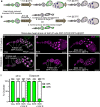
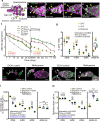
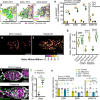

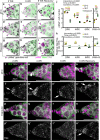
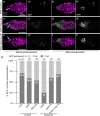
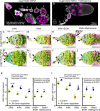
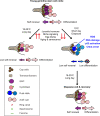
Similar articles
-
The sleeping beauty: how reproductive diapause affects hormone signaling, metabolism, immune response and somatic maintenance in Drosophila melanogaster.PLoS One. 2014 Nov 13;9(11):e113051. doi: 10.1371/journal.pone.0113051. eCollection 2014. PLoS One. 2014. PMID: 25393614 Free PMC article.
-
Niche-associated activation of rac promotes the asymmetric division of Drosophila female germline stem cells.PLoS Biol. 2012;10(7):e1001357. doi: 10.1371/journal.pbio.1001357. Epub 2012 Jul 3. PLoS Biol. 2012. PMID: 22802725 Free PMC article.
-
Photoperiodic diapause in Drosophila melanogaster involves a block to the juvenile hormone regulation of ovarian maturation.Gen Comp Endocrinol. 1990 Aug;79(2):174-84. doi: 10.1016/0016-6480(90)90102-r. Gen Comp Endocrinol. 1990. PMID: 2118114
-
Signal transduction pathways regulating Drosophila ovarian germline stem cells.Curr Opin Insect Sci. 2020 Feb;37:1-7. doi: 10.1016/j.cois.2019.10.002. Epub 2019 Oct 17. Curr Opin Insect Sci. 2020. PMID: 31726320 Review.
-
Slow aging during insect reproductive diapause: why butterflies, grasshoppers and flies are like worms.Exp Gerontol. 2001 Apr;36(4-6):723-38. doi: 10.1016/s0531-5565(00)00238-2. Exp Gerontol. 2001. PMID: 11295511 Review.
Cited by
-
Environmentally responsive reproduction: neuroendocrine signalling and the evolution of eusociality.Curr Opin Insect Sci. 2022 Oct;53:100951. doi: 10.1016/j.cois.2022.100951. Epub 2022 Jul 18. Curr Opin Insect Sci. 2022. PMID: 35863739 Free PMC article. Review.
-
Altered circadian rhythm, sleep, and rhodopsin 7-dependent shade preference during diapause in Drosophila melanogaster.Proc Natl Acad Sci U S A. 2024 Jul 2;121(27):e2400964121. doi: 10.1073/pnas.2400964121. Epub 2024 Jun 25. Proc Natl Acad Sci U S A. 2024. PMID: 38917005 Free PMC article.
-
Metabolic and transcriptional regulation of reproductive diapause in Arma chinensis.iScience. 2025 Jan 6;28(3):111761. doi: 10.1016/j.isci.2025.111761. eCollection 2025 Mar 21. iScience. 2025. PMID: 40124477 Free PMC article.
-
Glioma stem cells: drivers of tumor progression and recurrence.Stem Cell Res Ther. 2025 Jun 7;16(1):293. doi: 10.1186/s13287-025-04352-z. Stem Cell Res Ther. 2025. PMID: 40483525 Free PMC article. Review.
-
Juvenile hormones direct primordial germ cell migration to the embryonic gonad.Curr Biol. 2024 Feb 5;34(3):505-518.e6. doi: 10.1016/j.cub.2023.12.033. Epub 2024 Jan 11. Curr Biol. 2024. PMID: 38215744 Free PMC article.
References
-
- Reynolds JA. Noncoding RNA regulation of dormant states in evolutionarily diverse animals. Biol. Bull. 2019;237:192–209. - PubMed
-
- Tougeron K. Diapause research in insects: historical review and recent work perspectives. Entomol. Exp. Appl. 2019;167:27–36.
Publication types
MeSH terms
Substances
Grants and funding
LinkOut - more resources
Full Text Sources
Molecular Biology Databases
Research Materials
Miscellaneous

